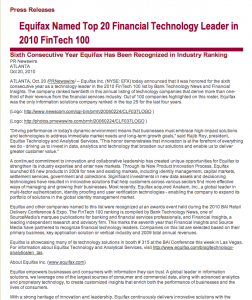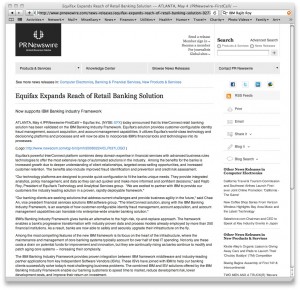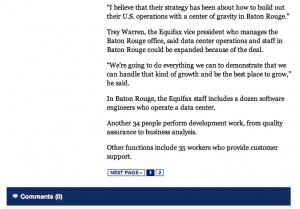Launching New Authentication
Giving Frequent Feedback
I have been always blessed with some of the strongest Advisory Boards for my business. The trick has been getting executives who are not potential customers but with great experience that my management team could be well served with. In one of those recent Advisory Board meetings a very interesting discussion came up. Which I thought is a great point of learning for me.
My management team started a discussion around how to create a very effective rewards and recognition system when you have very different kind of jobs (product development, services, sales etc).
Some of the advice we got was pretty insightful. First, most agreed that while we need to have programmatic methods, they tend to be fundamentally too broad to be effective.
Instead, the push was to understand that if employees are clamoring for more rewards and recognition from management/leadership, there is a larger message here. The organization is saying that the feedback mechanism is not often enough or strong enough.
In other words, if employees were to very often get feedback on (*) how what they are doing aligns to the larger plan for the organization (*) what they are doing well and (*) what course correction is required, their sense of alignment, contribution and participation would solve the root cause of the problem why they feel they are not being recognized.
It was also felt that this forum should give the employee an opportunity to give quick feedback to the manager on what the manager needs to provide/do to help the employee achieve his/her goals.
One board member talked about a 10-10 practice. Every two weeks he makes himself and all managers in his group sit with all direct reports for a 10 minute discussion on giving feedback – 20 minutes either way as described in the two preceding paragraphs.
Another member talked about a variation of the same being practiced in the whole company (large strategy consulting company).
That was a pretty interesting learning for me. Understanding the root cause of why employees feel they are not being rewarded or recognized enough.
Worthwhile idea to copy.
Do you have any experience on this? What has worked? What has not?
Rajib
Top 25 Tech Company Award
Acquiring Anakam
Launching Fraud solutions
Keeping calm under fire
Some of the leaders that I have admired most have had the ability to not only stay calm under stress, but continually be outright positive. And these leaders have been across all levels of an organization. Because they have been across all levels, I think this is more of a personality trait than something one necessarily acquires as they go up. However, I have no reason to believe that one cannot strive to be so, even if it does not come naturally.
Stress gets created when the observable results are at variance with what is desired. As organizational behavior will teach you, if that accountability comes without commensurate authority, that exacerbates the personal stress.
In today’s corporate environment (most of it at least), the demand for short term accountability is extremely high. The tolerance for failure – regardless of all high words of risk taking capability – is getting narrower and narrower. A lot of this is derived not necessarily from within the organization but the tough competitive environment and the fact that business is moving at lightning speed.
One unfortunate outcome is that when a perceived failure happens, the organization demands quick answers. Quick answers, no doubt, lead to simplistic conclusions. Add the tendency to arrive at simplistic conclusions and the above discussed tolerance for failure – and that leads to another dangerous behavior – finger pointing. This is derived from a deep rooted human tendency – “I am better than others; what I control performs better than something that I do not control.”
Finally, average human being finds it more convenient to name a person as the reason for failure than understand the true nuances of processes and constraints. First, it is easier, it is more convenient and it is something most people can relate to. Person A is an idiot – Ah! I get that. The complexity of understanding constraints – some written and some not written – some internal some external – that starts becoming too complex for us This leads to a missed opportunity to drive true learnings for the organization.
Leaders have to be doubly vigilant not to fall into this pattern of behavior. Any organization learns quickly from the top. As human beings, we all want to be leaders. In reality, we all want to be led. We copy behavior from the top very fast – perhaps believing that compliance will lead to success. In the process, we amplify the behavior at the top.
Any sign of panic on the top and the dissonance in the org below – like a bunch of dispersed ants – is immediately visible. Any signs of finger pointing from the top and immediately the organization takes a cue.
A true leader needs to address issues from the position of poise and even handedness. A calming sense needs to pervade in the organization that is under stress. Giving the entire troop a sense of purpose that they are all in it together is of paramount importance. Regardless of the level of stress, they will need to stick together and emerge successful.
But above all be aware that this is just one more hurdle of many more to come in one’s career. Crossing hurdles require cool-headed thinking and an aura of positivity around oneself.
So how many such cool-headed leaders have you seen? I have been fortunate enough to see a few in my life.
IBM Tie Up
Appro Sale
Time Management
I am not going to bore you by telling you why time management is important and all that. I suspect enough books have been written on this topic. (I always have wondered though how people focused on effective time management are supposed to read up all those books on effective time management J ). Instead, let me tell you a couple of observations on some of the executives that I have learnt from.
First – and this might surprise you – what to spend time on differs vastly from executive to executive (and I have filtered the ones that I consider are very successful). Some spend lot more time on understanding the details – some prefer to drive the strategy. Some spend more time with their directs, some spend less. Some consider spending time with employees after work improper time of their work and some make it a point to do so. Regardless of the usual story of “balance” and “do both” and all that, my observation is that the successful executives – knowingly or unknowingly choose what they want to spend time on. And usually this differs from one executive to another.
Second – and this will not surprise you – they are very disciplined about managing their time with the choices that they have made above. It is very easy to fill up one’s calendar – especially as you go up the hierarchy. There is always some crisis, there is always an important customer, there is always an important presentation and so on and so forth. The ones that I admire most have struck me with their ability to say “No” and question why they are getting involved in things that they should not. That is undoubtedly a common thread between successful executives.
Third – and this is more empirical evidence than I have taken the time to observe in detail – it seems that some amount of ability to compartmentalize your time and thoughts is important to be able to succeed. Some of the best ones had an uncanny knack of being able to switch gears yet grasp the “linking points” when they existed.
Finally – there is no correlation as I have seen between success and how much time some of the best executives spend on work. There are the ones who are absolutely obsessed with spending as much time as they can on work related items and there are the ones who draw boundaries and stick to them. While it is very difficult to compare two executives since they tend to differ so much from one another, I can definitely make the following observation thinking thru all the great executives I got close to – customers, partners and employers: In the longer term, the differences they made to their companies was very little to do with how much time was spent but a lot more to do with what they did with their time.
I am sure you will have something to share with me on this…












